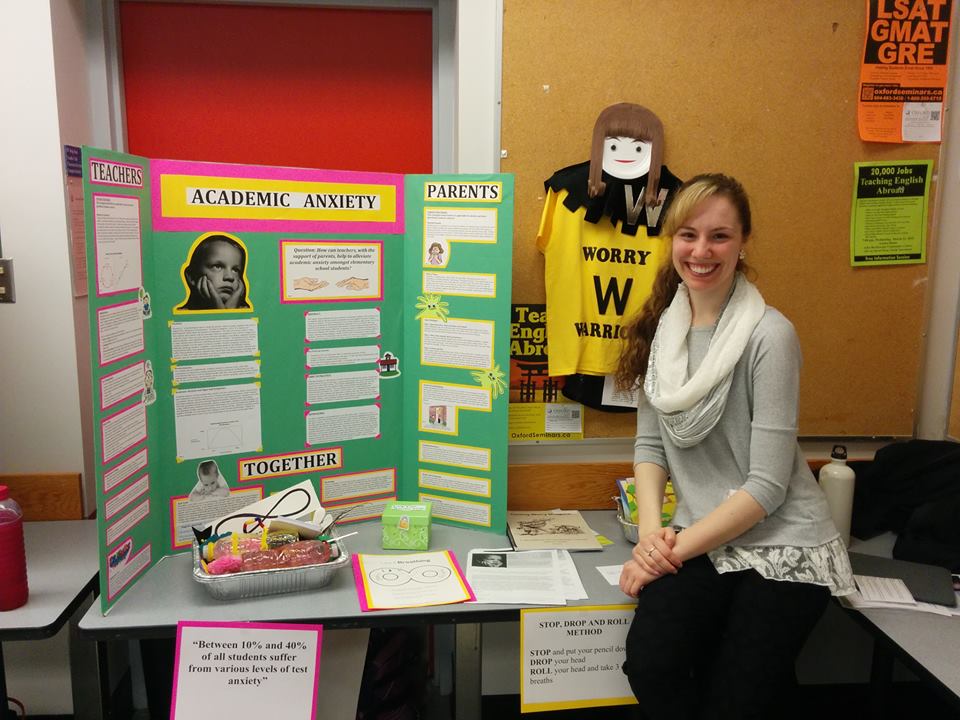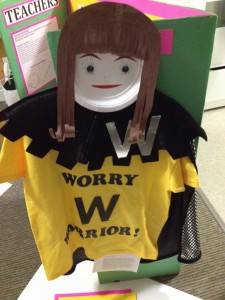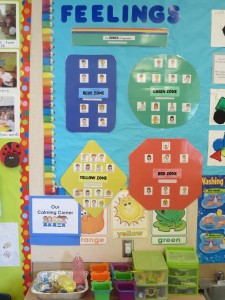 My inquiry project addressed the topic of anxiety in elementary students, with a primary focus on academic anxiety and how teachers and parents can work together to become a support network for students. The goal of this project was to create awareness about anxiety. According to Canadian statistics, the most prevalent mental health illness amongst children is anxiety. It affects 6.4% of children and youth ages 4-17 and it has been estimated that 60,900 students in British Columbia (B.C.) suffer from anxiety (Hymell, 2014). These statistics illuminate and reinforce that most teachers will have students in their classrooms with anxiety disorders.
My inquiry project addressed the topic of anxiety in elementary students, with a primary focus on academic anxiety and how teachers and parents can work together to become a support network for students. The goal of this project was to create awareness about anxiety. According to Canadian statistics, the most prevalent mental health illness amongst children is anxiety. It affects 6.4% of children and youth ages 4-17 and it has been estimated that 60,900 students in British Columbia (B.C.) suffer from anxiety (Hymell, 2014). These statistics illuminate and reinforce that most teachers will have students in their classrooms with anxiety disorders.
Throughout my own educational journey thus far, I have personally experienced academic anxiety. Originating in elementary school, it was first caused by my dread and terror of mathematics. As a young student, I remember that math brought great frustration and with it, tears, stress and the fear of failure. This anxiety, already stated, only strengthened and became more severe later in high school. Thanks to a tutor, who believed in me and broke things down into smaller steps, I began to succeed. I therefore sympathize with students who are experiencing anxiety as it can affect one’s physical and cognitive abilities. As a result, I was extremely curious to explore and learn about some of the coping strategies that teachers could utilize in their classrooms to help reduce anxiety within their students.
Thanks to a tutor, who believed in me and broke things down into smaller steps, I began to succeed. I therefore sympathize with students who are experiencing anxiety as it can affect one’s physical and cognitive abilities. As a result, I was extremely curious to explore and learn about some of the coping strategies that teachers could utilize in their classrooms to help reduce anxiety within their students.
This issue should not go ignored, as research has linked anxiety to other problems including depression, poor self-esteem and attention difficulties. In general, resources emphasized the importance of having open dialogue with children, incorporating relaxation exercises and teaching children a variety of anxiety coping strategies. Anxiety disorders have the potential to create chronic problems. Therefore, it is imperative that we address this issue at a young age and introduce anxiety-reducing strategies at school and home to help prevent future problems.
I made my inquiry project come to life in my classroom by incorporating a number of anxiety reducing strategies. One of the most effective methods that I used was creating a calming corner in the classroom. During the day, if students felt that they needed a moment to calm their bodies and relax they could go to the calming corner and release some of their anxiety by using some of the manipulatives including the water bottles, stress balls, and fidget tools, etc. I was amazed how students were able to take the initiative and go to the corner when they knew that they were frustrated or needed a real “moment” to relax. It was the combination of the calming corner and The Zones of Regulation that allowed students to really express and self-manage their feelings.
Another very important strategy that I used was incorporating deep breathing exercises into the classroom such as box/square breathing and lazy eight breathing. I found this to be a beneficial exercise to do before students engaged in a summative assessment or when they needed to calm down after outside play. I knew that the breathing exercises were resonating with students when I saw students initiating the box breathing to relax.
I have attached for your perusal an academic anxiety brochure, which I designed that offers tips for both educators and parents on how to help alleviate academic anxiety. I have also attached the references that I used during the research process.
Anxiety-Handout Jenna McArthur
Inquiry Project References-J. McArthur


